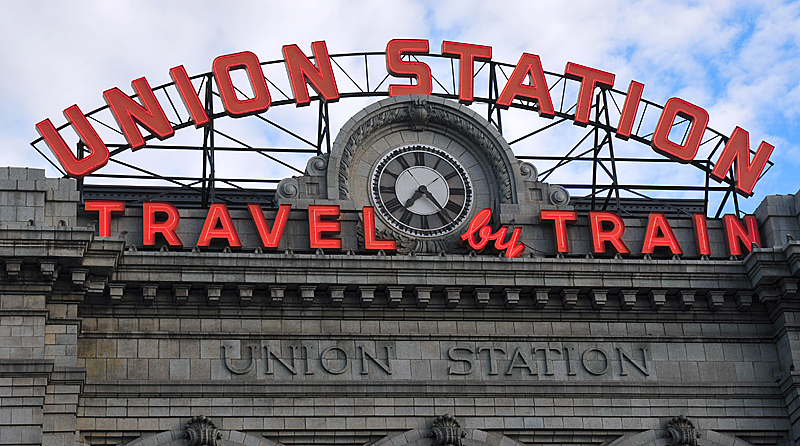







Reenactment Engines at Promontory Summit, Utah
The railroad produced as dramatic a change in the 1800s as the Internet did in our time.
As Ralph Waldo Emerson put it, the railroad "annihilated" distance. When the 49ers came to California, it was a trip taking up to six months, by land or by sea. The railroad cut that down to a matter of days.
In the 1850s, railroad mileage in the United States tripled. By 1860, there were more miles of railroad in the United States than in the rest of the world combined. The railroad mileage in the North was twice that of the South. And, where were those engines built that were used on the railroads of the South? In the North.
The railroad not only changed forever the practical considerations of military transport and supply, but also the broader conceptual thinking of military strategy. The industrial capacity of the North sealed the fate of the South in the Civil War.
By the end of the decade (1869) we had built a transcontinental railroad. This was the 19th-century engineering equivalent to putting a man on the moon (which interestingly, occurred exactly 100 years later).
There was something even more significant than the increased speed of transport that the railroad brought. That was the reduction in freight rates that rail provided over the previous option of wagon transport.
This was particularly important in the West where navigable rivers are few. Freight rates fell to a small fraction of what they were previously. All of a sudden, mining, farming and ranching became profitable in this huge portion of the country that had previously been only sparsely inhabited (even by Native Americans).
Prior to the arrival of the railroad, there were people in California, and east of the Mississippi, but a whole lot of nothing in between. Maps showed this huge region in the West with a label that reflected this - it was called the Great American Desert.
The low-cost transportation provided by the railroad changed the Great American Desert into the great American breadbasket, the great American mining operation, and the great American cattle ranch.
When Jefferson bought the Louisiana Purchase, he figured it would take centuries for us to populate it. With the railroad, we did it in a few decades.

Railroads in 1870

Railroads in 1890